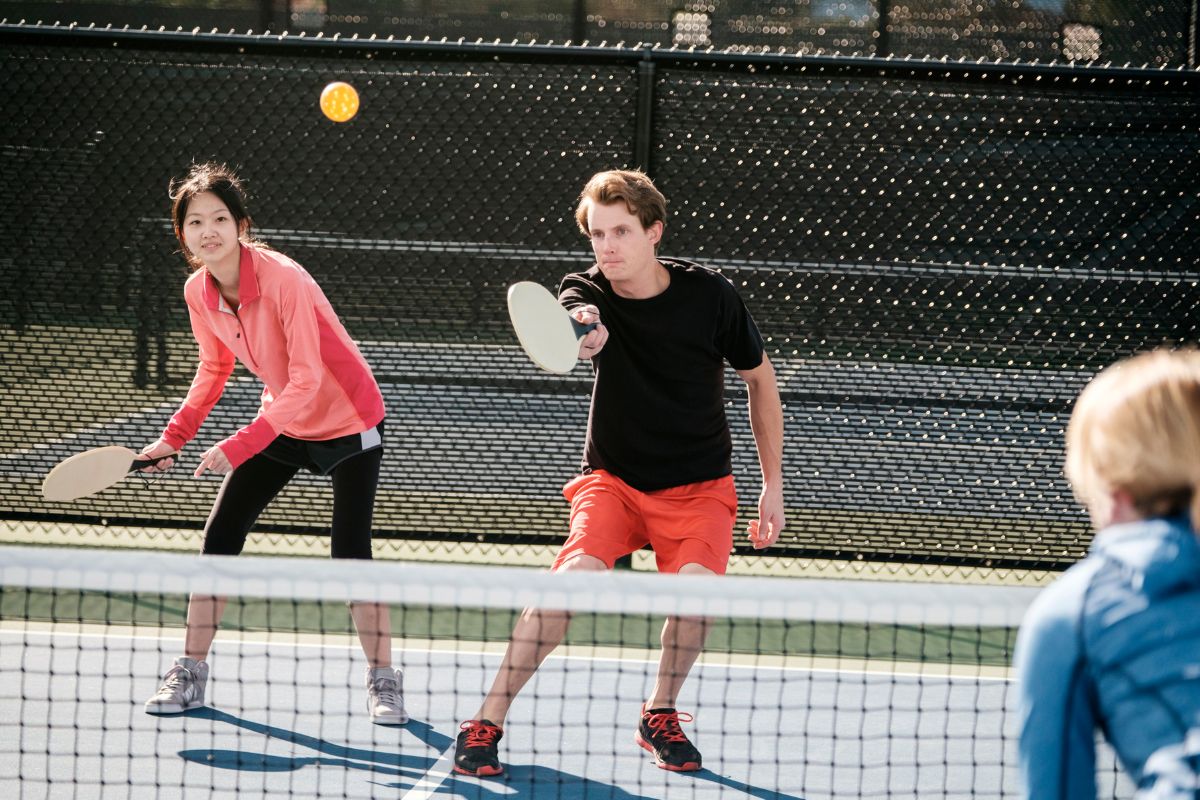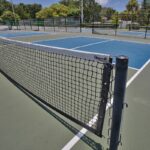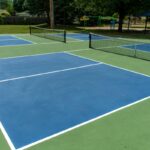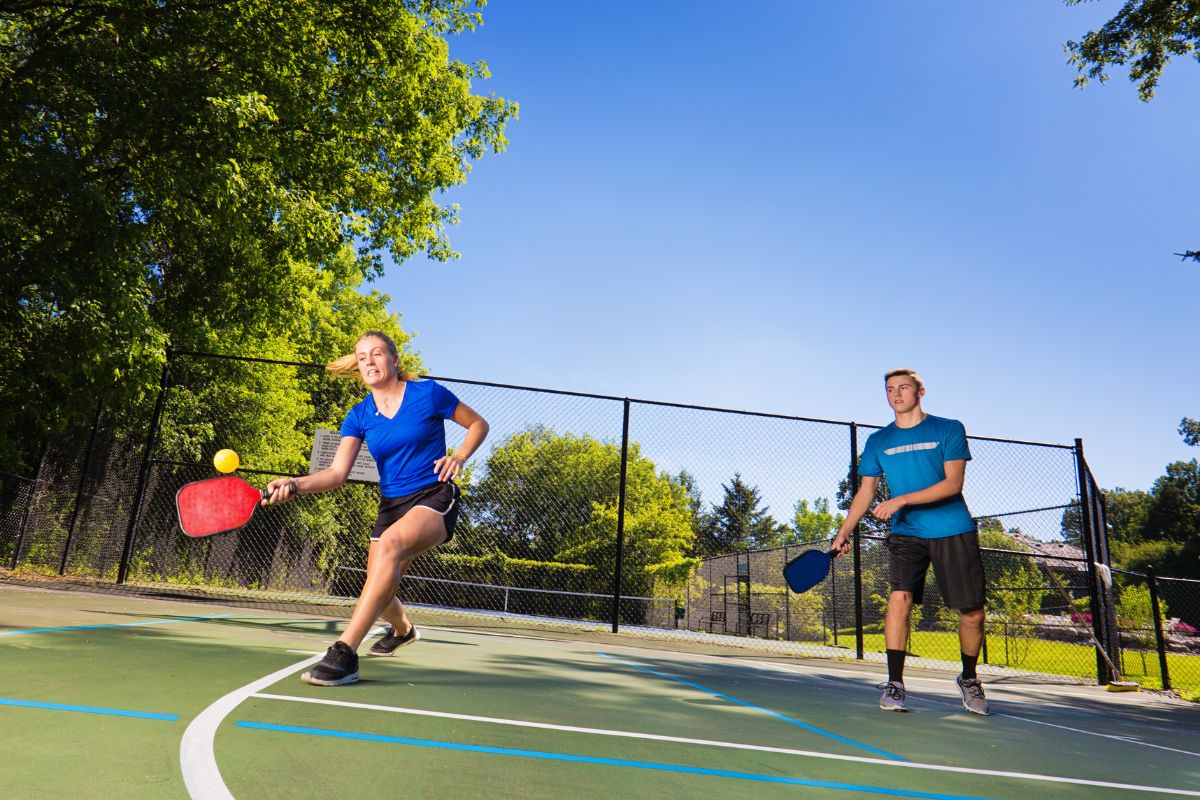With its ease of playing, straightforward rules, and its ability to create an enjoyable experience for people of all ages, it is no wonder that pickleball is steadily gaining popularity!
Like any other sport, there are a couple of rules and general bits of information that you must know about.
This includes learning what and where the boundaries of the court are, and how to correctly position yourself to take a swing at your opponent.

It looks like it should be pretty simple to hold a pickleball paddle and get the ball exactly where you want it to go. However, it takes a bit of skill and practice to do so.
Because there’s so much you need to think about when stepping onto the pickleball court, it can often feel very overwhelming. That’s where this guide comes in handy.
Grip The Paddle
There are a few key grips when it comes to pickleball paddles which are the eastern grip, the continental grip, and the western grip.
These each have their advantages and disadvantages and selecting the best type of grip for you primarily depends on your playing style.
The Continental Grip
The continental grip is probably the best type of grip for hitting backhand or forehand shots, dinking, or even smashing the ball.
This is because it does not require you to make any changes to where your hand is positioned.
- Neutral grip: best for hitting forehand and backhand shots, dinking, putting a spin on the ball, slicing the ball, and close to the net.
- Strong grip: for overhead smashes and very aggressive forehand shots during a game.
- Weak grip: this does not see much use in pickleball. It works to get the paddle face open but limits players in just about every other way.
Most seasoned and professional pickleball players agree that the continental grip is the best grip to use for the majority of players.
This is not to say that other grips aren’t used by many of the greatest pickleball players because they are, yet it is the continental that is the most common.
Consider The Height Of The Pickleball Paddle
You may not think it matters a lot in the grand scheme of the game, but the height at which you hold your pickleball paddle can make the difference between winning and losing a round of pickleball!
Pro pickleball players currently prefer to drop the paddle height to the belly button (as opposed to the “traditional” height of about chest level). There is a reason for this seemingly random decision.
If you are holding your pickleball paddle at chest height, this means that anything above your paddle head will likely wind up venturing out of bounds.
Keeping the paddle around your navel means you have an equal overall distance to travel up for a higher shot and also down for a lower shot.
This grants you the greatest overall coverage of shots inside the court in the shortest possible time.
Where To Hold The Paddle
Try to keep your hand on the handle of your paddle with the first knuckle of your index finger located on the 2nd bevel.
Some players prefer to keep hold of the bottom of the handle as it provides more reach, but others prefer to grip the top for more control.
Neutral Position
Again, you should opt to keep the paddle around your belly button to get the most benefits from your play. It also equips you to respond to just about any situation you may encounter while on the court.
It may be a good idea to adopt a stronger grip when it comes to playing, although this is something that will naturally occur as you learn the ropes of the game. Your aim here is to keep the paddle feeling light and still.
At The Net

Maintain the same position at the net but with a slight twist. Here, you need to think more carefully about overhead smashes and must be prepared to encounter them.
Stay upright with your knees bent and your paddle firmly out in front of you, with the paddle gripped in your hands. It may be intimidating when the shots are flying at you.
Yet with enough practice (Check out How To Practice Pickleball Alone), you’ll easily be able to gain confidence to block the shots.
Things To Remember
- The pickleball paddle you use should ensure that the weight rests more in your fingers rather than the palm of your hand. This ensures that you are not holding the pickleball paddle handle tighter than is necessary.
- You must try to maintain a loose grip to not choke the paddle but also need to have enough of a grip so that the paddle does not fall out of your hands.
Adjustment Is Key
When it comes to holding a pickleball paddle, it is important to note that the overall positioning of the paddle may change depending on the situation you find yourself in.
For example, it may be impacted by the tendencies of an opponent, your strengths, and weaknesses, where you’re standing on the court, and maybe even the shot that has just been played.
And if an opponent is showering your shoulders with hits (while the pickleball remains inside the court boundary lines) then it might be a good idea to use a higher paddle position to properly counter these higher attacks.
Summary
When it comes to holding a pickleball paddle, it is all about grip.
Hold it at level with your belly button with a relatively firm (but not tight) grip so that you can control your movements but are not at any sort of risk of your paddle flying out of your hands.
If you can stay in control of your movements without choking the handle of the paddle, you can rejoice in the knowledge that you have found the optimum playing position.
Make sure to maintain this grip the next time you set out to play a game of pickleball.
- What Kind Of Ball Is Used In Pickleball? - July 13, 2023
- How Much Does It Cost To Build A Pickleball Court? - July 11, 2023
- When Do New Pickleball Rules Take Effect? - July 8, 2023










